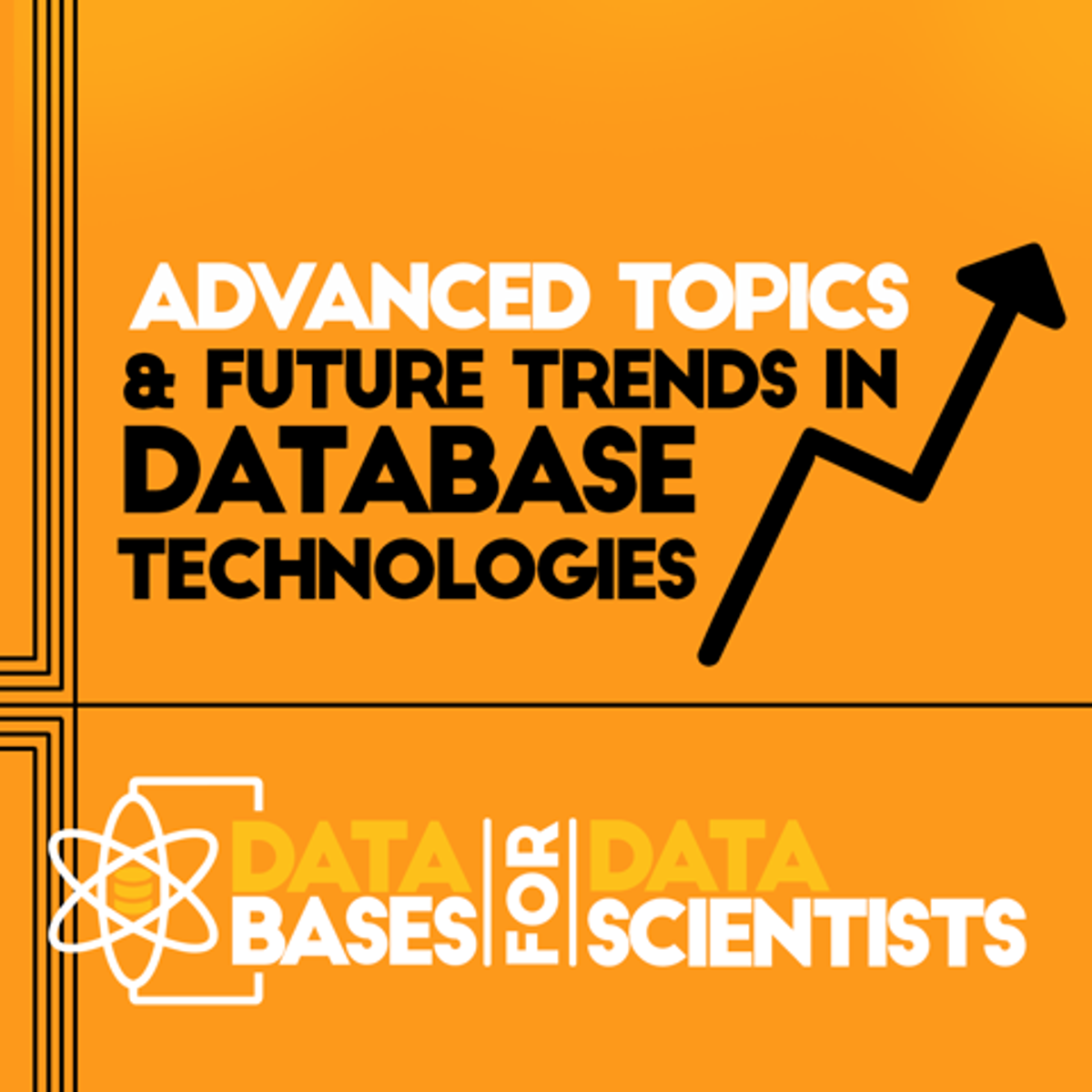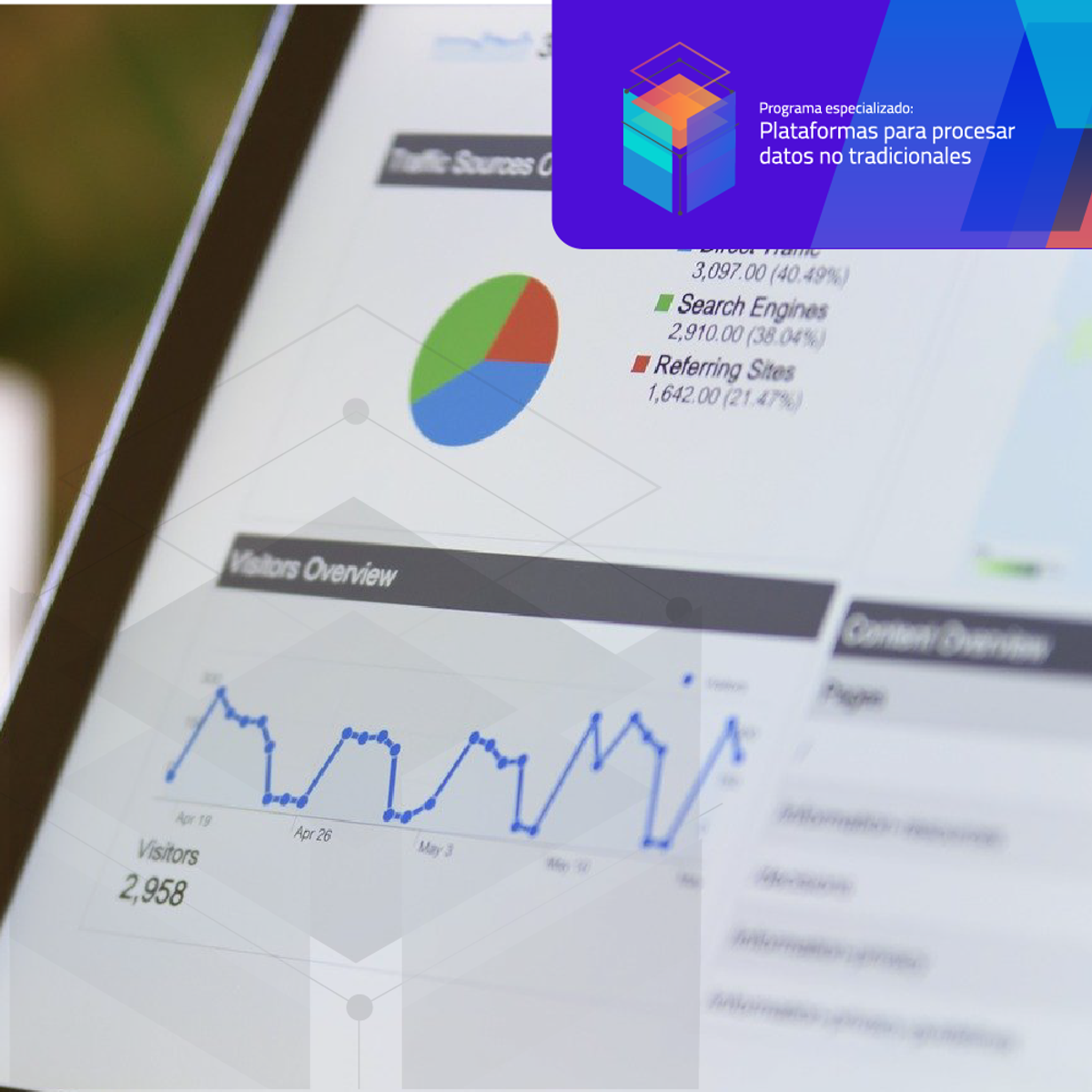Database Designer
Database Designer: Architecting the World's Information
A Database Designer is a specialized professional who blueprints the structure of databases. They are the architects who decide how data should be organized, stored, linked, and managed to meet the specific needs of an application or organization. Their primary goal is to create database schemas that are efficient, secure, scalable, and maintainable, ensuring that data can be accessed quickly and reliably while maintaining its integrity.
Working as a Database Designer can be deeply engaging. You'll find yourself solving complex logical puzzles, figuring out the best way to model real-world entities and their relationships in a digital format. There's also the satisfaction of knowing your work forms the critical foundation upon which software applications, business intelligence systems, and countless data-driven processes rely. It's a role that combines technical expertise with creative problem-solving.
Introduction to Database Design
Understanding the role of a Database Designer begins with appreciating the importance of well-structured data in our modern world. Nearly every digital interaction generates or consumes data, and behind the scenes, databases store and manage this information.
What is Database Design?
Database design is the process of producing a detailed data model of a database. This logical data model contains all the needed logical and physical design choices and physical storage parameters needed to generate a design in a Data Definition Language, which can then be used to create a database. A fully attributed data model contains detailed attributes for each entity.
The core task involves translating requirements – what data needs to be stored, how it relates, and how it will be used – into a formal structure. This includes defining tables, columns (fields), data types for each column, relationships between tables (like one-to-many or many-to-many), and constraints to ensure data accuracy and consistency.
Why is good design so crucial? A poorly designed database can lead to slow performance, difficulty in retrieving information, data redundancy (storing the same information multiple times), and data anomalies (inconsistencies that arise during updates or deletions). A well-designed database, conversely, ensures efficiency, reliability, ease of maintenance, and the ability to scale as data volumes grow.
This foundational book provides a historical perspective on the core concepts of modeling data entities and their relationships.
Understanding how data is modeled is central to database design. These topics explore key concepts in structuring data.
Where Do Database Designers Work?
The need for skilled Database Designers spans nearly every industry imaginable. Any organization that relies on data needs professionals who can structure that data effectively. This includes technology companies building software products, financial institutions managing transactions and customer accounts, healthcare providers handling patient records, e-commerce businesses tracking inventory and orders, and government agencies managing public data.
Specific roles might be found within IT departments, software development teams, data warehousing groups, or business intelligence units. The size and structure of the organization often dictate whether database design is a dedicated role or part of a broader position like a Database Administrator or Software Engineer.
From startups to large multinational corporations, the demand for efficient data management ensures that database design skills remain relevant across diverse economic sectors. The rise of big data and cloud computing has further amplified the need for experts who can design scalable and robust data architectures.
Related Tech Roles
The role of a Database Designer often intersects with other technology professions. Understanding these distinctions is helpful. A Database Administrator (DBA) typically focuses on the operational aspects: installation, configuration, security, backups, performance tuning, and ensuring the database system runs smoothly day-to-day. While DBAs need to understand design principles, their primary focus is maintenance and operation.
A builds applications that interact with the database. They consume the structure created by the designer, writing code to read, write, and update data. Close collaboration between designers and engineers is vital to ensure the database meets the application's needs efficiently.
A often works on the infrastructure for large-scale data processing. They build data pipelines, manage data warehouses or data lakes, and ensure data is available for analysis. While they might be involved in designing schemas for analytical purposes, their scope is often broader than the application-specific focus of many database designers.
Other related roles include the , who uses the data stored in databases to derive insights, and the , a more senior role that involves designing the overall data strategy and infrastructure for an entire organization, often overseeing the work of database designers. A often blends design and implementation, writing stored procedures, functions, and triggers within the database itself.
Database Designer: Role and Responsibilities
Delving deeper, the day-to-day work of a Database Designer involves a mix of technical tasks, collaboration, and adherence to governance principles. It's about more than just drawing diagrams; it's about building robust, reliable data foundations.
A Day in the Life
A typical day might involve several activities. Requirement analysis is key: interviewing stakeholders (like business users or software developers) to understand precisely what data needs storing and how it will be used. This information feeds into the core task of data modeling, often using techniques like Entity-Relationship Diagramming (ERD) to visually represent the database structure.
Designers then translate these models into actual database schemas, defining tables, specifying appropriate data types (e.g., integer, text, date), and establishing primary and foreign keys to link related data. Normalization is a critical process applied during design to minimize redundancy and improve data integrity by organizing data into tables logically.
Writing and refining SQL (Structured Query Language) is often part of the role, whether for creating the database structure (DDL - Data Definition Language) or for testing queries (DML - Data Manipulation Language). Query optimization, ensuring data can be retrieved efficiently, is also a significant concern. Finally, thorough documentation of the design is essential for maintenance and future development.
These topics cover fundamental techniques used daily by database designers.
Collaboration is Key
Database Designers rarely work in isolation. Effective communication and collaboration are paramount. They must work closely with software developers to understand how applications will interact with the database, ensuring the design supports required functionalities and performance targets.
Interaction with data analysts and business intelligence teams is also crucial. Designers need to understand reporting requirements and analytical needs to structure data in a way that facilitates insight generation. This might involve designing specific views or summary tables.
Engaging with business stakeholders is necessary to grasp the underlying business rules and processes that the database needs to model accurately. Misinterpreting requirements can lead to flawed designs. Collaboration also extends to IT operations and DBAs to understand infrastructure constraints and ensure the design is compatible with the production environment.
Guardians of Data Governance
Database Designers play a significant role in data governance and compliance. The structure they create directly impacts data security and privacy. They must design schemas that allow for appropriate access controls, ensuring users can only see and modify data they are authorized for.
Compliance with regulations like GDPR (General Data Protection Regulation) or HIPAA (Health Insurance Portability and Accountability Act) often starts at the design phase. Designers need to understand these requirements and incorporate necessary features, such as mechanisms for data anonymization or easy data retrieval and deletion upon request.
Ensuring data integrity is another core governance responsibility. This involves implementing constraints within the database (like uniqueness, non-null requirements, or referential integrity) to prevent invalid or inconsistent data from being entered. A well-designed database is inherently easier to govern and maintain over its lifecycle.
Core Skills and Tools
Becoming a successful Database Designer requires a blend of strong technical abilities, critical thinking, and effective communication skills, supported by proficiency with specific tools.
Essential Technical Proficiencies
At the heart of database design lies a deep understanding of database concepts, particularly the relational model. Mastery of SQL is non-negotiable; designers must be adept at writing queries not just to retrieve data, but also to create and modify database structures (DDL) and manipulate data (DML).
Knowledge of data modeling techniques, especially Entity-Relationship Diagramming (ERD), is fundamental for planning and communicating designs. Understanding normalization principles (up to Third Normal Form and beyond) is crucial for creating efficient and robust schemas. Proficiency with one or more specific Relational Database Management Systems (RDBMS) like PostgreSQL, MySQL, SQL Server, or Oracle Database is usually required, as implementations can differ. Increasingly, familiarity with NoSQL database concepts is also valuable.
These courses offer strong foundations in SQL and relational database design principles, essential for any aspiring designer.
This practical guide is an excellent starting point for learning database design concepts.
Beyond the Code: Soft Skills
Technical skills alone are insufficient. Database Designers must possess strong analytical and problem-solving abilities to dissect complex requirements and devise optimal data structures. Meticulous attention to detail is critical, as small errors in design can have significant downstream consequences.
Effective communication is vital for gathering requirements from non-technical stakeholders and explaining design choices to developers or managers. This includes both written communication (documentation) and verbal communication (meetings, presentations).
Logical thinking, the ability to abstract real-world concepts into data models, and a systematic approach to design and testing are also key attributes for success in this field. Patience and persistence are needed when troubleshooting complex design issues or optimizing performance.
Tools of the Trade
Database Designers utilize various software tools to aid their work. Data modeling and diagramming tools like Lucidchart, draw.io, ER/Studio, or Visio help visualize database structures and relationships. These visual aids are essential for communication and documentation.
Database Integrated Development Environments (IDEs) or client tools such as DBeaver, SQL Developer, pgAdmin, or MySQL Workbench are used for writing and executing SQL queries, managing database objects, and interacting directly with the database system.
Version control systems, particularly Git, are increasingly used to manage changes to database schemas, allowing for collaboration, history tracking, and easier rollbacks. Performance monitoring and profiling tools specific to the database system being used help identify bottlenecks and optimize query performance.
Formal Education Pathways
While practical experience and self-study can lead to a career in database design, a formal education often provides a strong theoretical foundation and structured learning environment.
University Degrees
Many Database Designers hold a bachelor's degree in fields like Computer Science, Information Technology, Software Engineering, or Management Information Systems (MIS). These programs typically offer coursework directly relevant to database concepts and broader computing principles.
A Computer Science degree often provides a deep understanding of algorithms, data structures, and theoretical foundations, which are highly beneficial for complex design tasks. Information Technology or MIS programs may offer a more applied focus, integrating business contexts with technical skills, which is valuable for understanding user requirements.
While a specific "Database Design" degree is rare, programs focusing on data management, information systems, or software development usually cover the necessary ground. Some individuals pursue master's degrees for further specialization in database systems or data science.
Foundational Coursework
Regardless of the specific degree title, certain subjects are fundamental. A course dedicated to Database Management Systems (DBMS) is essential, covering relational theory, SQL, normalization, transaction management, and database architectures.
Courses in Data Structures and Algorithms provide critical knowledge for understanding data organization and processing efficiency. Software Engineering principles teach methodologies for requirements gathering, design, testing, and documentation, all applicable to database design. Systems Analysis and Design courses help in understanding how databases fit within larger information systems.
Mathematics courses, particularly discrete math, can be helpful for understanding relational algebra and logical foundations. Depending on the application domain, courses in areas like web development, operating systems, or networking can also provide valuable context.
These resources delve into the theoretical underpinnings and design concepts crucial for database professionals.
These books offer comprehensive coverage of database modeling and design principles often taught in university courses.
Advanced Study and Research
For those interested in pushing the boundaries or specializing deeply, graduate studies (Master's or Ph.D.) offer opportunities for advanced coursework and research. Research areas in database systems are diverse and constantly evolving.
Topics might include distributed databases (managing data across multiple machines), NoSQL database technologies, graph databases, data warehousing and OLAP (Online Analytical Processing), database security and privacy-preserving techniques, query optimization algorithms, or the intersection of databases with machine learning.
Advanced study is typically pursued by those aiming for research positions, academic roles, or highly specialized technical leadership roles within industry, such as Data Architect positions focusing on cutting-edge technologies.
This course touches on advanced topics and future trends within database technologies.
Online Learning and Building Experience
Formal education isn't the only path. With dedication and the right resources, online learning and self-directed study can be effective routes into database design, especially for career changers or those supplementing traditional education.
Can You Learn Database Design Online?
Absolutely. The foundational knowledge and practical skills required for database design are well-suited to online learning formats. Numerous high-quality courses cover everything from basic SQL to advanced database modeling and system-specific administration. Online platforms provide flexibility, allowing learners to study at their own pace and often at a lower cost than traditional degree programs.
However, success through online learning requires discipline, motivation, and a proactive approach. Unlike structured degree programs, learners must chart their own path, select appropriate resources, and ensure they gain practical, hands-on experience. OpenCourser can help; you can browse courses in Computer Science or Data Science, use the "Save to list" feature to curate your learning plan, and consult the Learner's Guide for tips on effective self-study.
The key challenge lies in demonstrating proficiency to potential employers without a formal degree. This makes building a portfolio of projects absolutely essential.
Charting Your Online Learning Journey
A logical progression for self-study might start with mastering SQL fundamentals – SELECT statements, joins, filtering, basic data manipulation. Following this, delve into relational database concepts: understanding tables, keys, relationships, and integrity constraints. Data modeling and normalization are the next crucial steps, learning how to design efficient and logical schemas.
Once the fundamentals are solid, learners can focus on specific database systems like PostgreSQL, MySQL, or SQL Server, exploring their unique features and administrative aspects. Advanced topics could include query optimization techniques, index strategies, an introduction to NoSQL databases, or data warehousing concepts.
Searching on OpenCourser using keywords like "database design," "SQL fundamentals," or "data modeling" will reveal numerous options. Look for courses with hands-on labs and projects to build practical skills.
These courses focus specifically on relational database design, building upon foundational SQL knowledge.
This comprehensive book is another excellent resource for mastering data modeling concepts.
Showcasing Your Skills: The Portfolio
For self-taught individuals or those transitioning careers, a portfolio of personal projects is arguably the most important asset. Theoretical knowledge is valuable, but employers want to see practical application. A portfolio demonstrates initiative, problem-solving skills, and the ability to deliver tangible results.
Portfolio projects don't need to be overly complex initially. Consider designing a database for a familiar scenario: a personal library catalog, a simple inventory system for a small business, a membership tracker for a club, or the backend for a basic blog or e-commerce site. Document your design process: the requirements, the ER diagram, the schema definitions (SQL DDL), and perhaps some sample queries.
As skills grow, tackle more ambitious projects, perhaps incorporating more complex relationships, larger datasets, or specific performance optimization challenges. Hosting project code and documentation on platforms like GitHub allows potential employers to easily review your work.
Career Progression and Advancement
A career in database design offers various paths for growth and specialization. Understanding the typical trajectory can help aspiring designers plan their long-term goals.
Starting Your Journey
Entry into the field often begins in related roles. Positions like Junior Database Developer, Junior DBA, or even Data Analyst can provide exposure to database concepts and practical SQL experience. Some might start as Software Engineers and gradually specialize in the database aspects of application development.
In these early roles, tasks might involve assisting senior designers, writing simpler queries, performing basic database administration tasks, or helping with data entry and validation. The focus is on learning the fundamentals, understanding the specific databases used by the organization, and building proficiency with SQL and modeling tools under supervision.
These roles provide essential grounding and experience working with real-world data systems.
Mid-Career Paths and Specialization
With experience, Database Designers take on more complex projects, lead design efforts, and mentor junior staff. Mid-career progression can follow several paths. One option is deepening technical specialization. This could involve becoming an expert in a specific database technology (e.g., Oracle, PostgreSQL internals), focusing on performance tuning and optimization, specializing in database security, or mastering cloud database platforms like AWS RDS, Azure SQL Database, or Google Cloud SQL.
Another path involves broadening scope towards data architecture. A
Some designers may move into management roles, leading teams of database professionals, or transition into related fields like Business Intelligence or Data Science, leveraging their strong understanding of data structures.
This book provides insights into the world of Business Intelligence, a common related field.
Certifications: A Boost or Requirement?
Database certifications, often tied to specific vendors like Oracle (e.g., OCP), Microsoft (e.g., Azure Data Engineer Associate), or AWS (e.g., Database Specialty), can be beneficial, particularly in certain environments or for specific roles. They validate knowledge of a particular technology platform.
Certifications can enhance a resume, potentially make a candidate stand out, and are sometimes preferred or even required by employers heavily invested in a specific vendor's ecosystem. They demonstrate a commitment to professional development and a standardized level of knowledge.
However, certifications generally supplement, rather than replace, practical experience and a strong understanding of fundamental design principles. While helpful, they are not always mandatory, especially in organizations using open-source databases or those valuing hands-on portfolio work more highly. The value of a specific certification often depends on the target job and industry.
These courses can help prepare for vendor-specific certifications, demonstrating expertise in popular database platforms.
Industry Trends Shaping the Future
The field of database design is not static. Technological advancements and evolving business needs continually shape the landscape, creating new challenges and opportunities for designers.
The Rise of the Cloud
One of the most significant trends is the migration of databases to cloud platforms like Amazon Web Services (AWS), Microsoft Azure, and Google Cloud Platform (GCP). Cloud providers offer Database-as-a-Service (DBaaS) options (e.g., AWS RDS, Azure SQL Database) that handle much of the underlying infrastructure management, scaling, and backups.
For designers, this shift means adapting to cloud-specific architectures and services. While core design principles remain, considerations around scalability, cost optimization within the cloud provider's pricing model, security configurations specific to the cloud environment, and integration with other cloud services become increasingly important. Familiarity with major cloud platforms is now a highly valuable skill. According to Gartner research, cloud adoption continues its strong growth trajectory, making cloud database skills essential.
These courses cover migrating and managing databases on major cloud platforms.
Beyond Relational: NoSQL and Real-Time
While relational databases remain the workhorse for many applications, the rise of Big Data, unstructured data (like text, images, social media feeds), and the need for high scalability and flexibility have fueled the adoption of NoSQL databases. These databases (including document stores like MongoDB, key-value stores like Redis, wide-column stores like Cassandra, and graph databases like Neo4j) offer different data models suited to specific use cases.
Database Designers increasingly need to understand when and how to use NoSQL solutions, sometimes in conjunction with relational databases (a polyglot persistence approach). This requires learning new data modeling paradigms and understanding the trade-offs between consistency, availability, and partition tolerance (CAP theorem). The demand for processing data in real-time for applications like IoT analytics or instant recommendations also drives interest in specialized database technologies.
These courses provide introductions to NoSQL concepts and systems, a growing area of importance.
AI and Automation in Design
Artificial Intelligence (AI) and Machine Learning (ML) are beginning to influence database design and management. Tools are emerging that leverage AI to suggest schema optimizations, predict query performance, automate tuning tasks, or even assist in generating initial database designs based on requirements.
While these tools offer potential benefits in terms of efficiency and identifying complex patterns, they are unlikely to replace human designers entirely in the near future. The need for understanding business context, nuanced requirements, ethical considerations, and making strategic trade-offs remains paramount. AI is more likely to become an assistive technology, augmenting the designer's capabilities rather than supplanting their role. Designers will need to learn how to effectively utilize these AI-powered tools.
Ethical Considerations in Database Design
Designing databases isn't just a technical exercise; it carries significant ethical responsibilities. The way data is structured, stored, and accessed can have profound impacts on individuals and society.
Protecting Privacy and Security
Database Designers are on the front lines of data protection. Their design choices directly impact how easily sensitive information can be secured and privacy maintained. This includes implementing robust access controls, considering data encryption needs (at rest and in transit), and designing schemas that facilitate data minimization (collecting only necessary data) and purpose limitation (using data only for specified purposes).
Understanding and designing for compliance with privacy regulations like GDPR, CCPA, or HIPAA is a core ethical and legal obligation. This might involve building mechanisms for user consent management, enabling easy data access requests, or implementing techniques for anonymization or pseudonymization where appropriate.
Neglecting security and privacy in the design phase can lead to data breaches, regulatory fines, and significant harm to individuals whose data is compromised.
Avoiding Bias in Data Structures
Databases reflect the world they model, but designers must be cautious not to encode or perpetuate societal biases within the data structure itself. The choices made about data categories, classifications, and the types of information collected can have significant implications.
For example, limiting gender options to a binary choice can exclude individuals. Collecting demographic data like race or ethnicity requires careful consideration of why it's needed and how it will be used to avoid discriminatory outcomes. Designers should question assumptions embedded in data requirements and strive for inclusive and fair representations.
This requires critical thinking about the potential impact of design choices and advocating for structures that minimize harm and promote equity.
The Environmental Footprint of Data
While often overlooked, large-scale data storage and processing consume significant amounts of energy, contributing to the environmental impact of technology. Data centers require substantial power for operation and cooling.
Efficient database design can play a small but meaningful role in mitigating this. Well-normalized schemas reduce data redundancy, meaning less storage space is needed. Optimized queries consume fewer computational resources (CPU, I/O), leading to lower energy consumption during data processing.
While individual design choices may seem minor, adopting principles of efficiency and minimizing wastefulness across the industry contributes to more sustainable data management practices. This involves considering the lifecycle of data and designing for efficient storage and retrieval from the outset.
Frequently Asked Questions
Q: Is a computer science degree mandatory to become a Database Designer?
A: No, a formal degree is not strictly mandatory, but it is very common and often preferred by employers. Strong practical skills, a solid portfolio demonstrating design capabilities, relevant certifications, and proven experience can overcome the lack of a degree, especially via online learning and self-study. However, a degree provides a strong theoretical foundation that is highly beneficial.
Q: How does a Database Designer differ from a Data Engineer?
A: While there's overlap, Database Designers typically focus on the logical and physical design of schemas for specific applications or systems, emphasizing normalization, integrity, and efficiency for transactional processing (OLTP). Data Engineers often focus on building and managing large-scale data pipelines, data warehouses, and infrastructure for data processing and analytics (OLAP), dealing with data movement, transformation (ETL/ELT), and big data technologies.
Q: What is the average salary progression for a Database Designer?
A: Salary varies significantly based on location, experience, industry, and specific skills (e.g., cloud expertise). Entry-level roles might start around $60,000-$80,000 USD annually. Mid-level designers with several years of experience can expect $80,000-$120,000+. Senior designers or those moving into Data Architect roles can earn well over $120,000, potentially reaching $150,000 or more. Consulting roles can also command high rates. Referencing resources like the U.S. Bureau of Labor Statistics (BLS) (which often groups designers with DBAs) or salary surveys from firms like Robert Half provides more specific regional data.
Q: Can transitioning from software development be advantageous?
A: Yes, very much so. Software developers already understand programming logic, application requirements, and how data is consumed. They often have experience working with databases from the application side. Transitioning involves deepening their knowledge of database theory, modeling principles, advanced SQL, and performance tuning from the database perspective. This background provides excellent context for designing effective databases.
Q: How vulnerable is the Database Designer role to AI automation?
A: Some routine tasks like basic schema generation or identifying simple optimization opportunities may become more automated. However, the core aspects of understanding complex business requirements, making nuanced design trade-offs, ensuring ethical considerations are met, and strategic thinking are difficult to automate fully. AI is more likely to augment the role, making designers more productive, rather than replacing them entirely in the foreseeable future.
Q: What industries hire the most Database Designers?
A: High demand exists across various sectors. Technology (software companies, cloud providers), Finance (banks, insurance, fintech), Healthcare (hospitals, research institutions, insurance), E-commerce and Retail, Telecommunications, and Government are major employers. Essentially, any industry heavily reliant on data management requires database expertise.
Conclusion
The role of the Database Designer is fundamental to the digital world. They are the architects who ensure that the vast amounts of data generated every second are structured logically, stored efficiently, and retrieved reliably. It's a career that demands a unique blend of technical proficiency, analytical thinking, attention to detail, and collaborative spirit.
Embarking on this path requires dedication, whether through formal education or disciplined self-study. The learning curve involves mastering SQL, understanding relational theory, honing modeling skills, and keeping pace with evolving technologies like cloud databases and NoSQL systems. Building a portfolio of practical projects is crucial to demonstrate capability.
While challenging, the rewards include solving intricate problems, building foundational systems that power applications and insights, and contributing to effective data governance. If you have an affinity for logic, structure, and technology, and enjoy the process of bringing order to complexity, a career as a Database Designer could be a fulfilling pursuit. Remember that continuous learning is key, and resources like OpenCourser are here to support your journey.



















